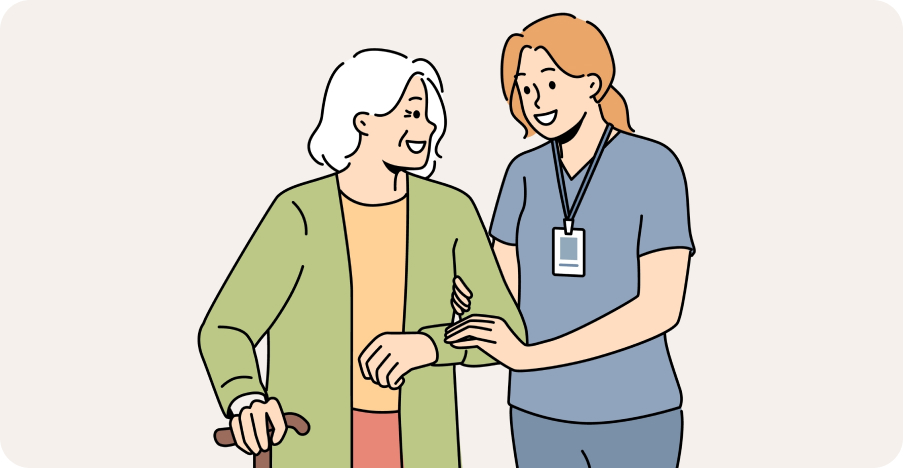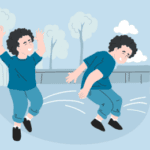
Blog
What Is The Difference Between PT and OT?
Author: Eva Lassey PT, DPT with contribution from Christina Bustanoby, OTR/L, Assistant Professor and Academic Fieldwork Coordinator UNLV OT Program
September 25, 2024
What Is The Difference Between PT and OT?

Understanding the Essential Differences Between Physical and Occupational Therapy
Written by: Eva Lassey PT, DPT with contributions from Christina Bustanoby, OTD, OTR/L, Assistant Professor and Academic Fieldwork Coordinator UNLV OT Program
When navigating the world of therapeutic care, two terms frequently emerge: Occupational Therapy (OT) and Physical Therapy (PT). Both are pivotal in enhancing a patient’s quality of life but serve distinct roles in the healthcare continuum. This blog post clarifies OT and PT, highlighting their differences to patients, healthcare professionals, caregivers, and parents considering therapy options.
Core Focus and Objectives of PT and OT
Occupational Therapy (OT) aims to enhance the quality of life of an individual’s ability to perform everyday activities that are meaningful to them. Occupational therapists work with individuals of all ages who require specialized assistance to live independent, productive, and fulfilling lives due to physical, developmental, social, or emotional challenges. The main focus of occupational therapy is to adapt to the environment, modify tasks, teach skills, and empower the patient and their family to increase participation and performance of daily activities.
Physical Therapy (PT), on the other hand, primarily addresses physical movement and function. PT aims to enhance or restore mobility, reduce pain, and prevent or limit permanent physical disabilities. Physical therapists help patients recover from injury, relieve pain, or manage chronic conditions with exercises, stretches, and other techniques designed to improve mobility, strength, and coordination. PT is commonly associated with rehabilitation after surgery, injury, or illness but can also prevent these occurrences by promoting overall physical health.

Distinguishing Characteristics of OT and PT
While both OT and PT involve hands-on care, there are notable differences in the techniques and treatment approaches used. Some key differentiating characteristics include:
- Targeted Areas: As mentioned earlier, OT targets daily living skills, health promotion, skill development, and community integration, while PT focuses on physical movement and functioning.
- Age Groups: OT caters to individuals across the lifespan, from newborns to older adults, similarly to PT.
- Areas of Specialization: While OT has a broad scope, it often specializes in areas such as pediatrics, hand therapy, mental health, assistive technology, sensory integration and rehabilitation. PT’s specialization includes orthopedics, sports medicine, geriatrics, neurology, pediatrics, general sensory processing with specifics such as proprioception, and cardiopulmonary care.
- Treatment Methods: OT primarily utilizes adaptive techniques to help patients perform daily activities independently. These may include assistive devices, environmental modifications, and skills training. Conversely, PT focuses on therapeutic exercises and techniques, including stretches, manual therapy, and modalities like ultrasound and electrical stimulation.

Importance of Collaboration Between OT and PT
While OT and PT have distinct objectives, they often work together within a patient’s treatment plan. In many cases, patients may require a combination of both therapies to achieve the best outcomes. For example, a stroke survivor might engage with an occupational therapist to relearn everyday skills such as dressing and eating, while also working with a physical therapist to regain strength and balance. This holistic approach ensures comprehensive care, addressing both the functional and physical aspects of recovery and rehabilitation.

Educational Background and Training for OTs and PTs
The educational paths for OTs and PTs also reflect their specialized focuses. Occupational therapists typically hold a master’s or doctoral degree in occupational therapy. They must pass a national examination to become licensed practitioners. Coursework and fieldwork emphasize the therapeutic use of everyday activities and require a deep understanding of the physical, psychological, and social components of illness and injury.
As of 2016, all new physical therapist graduates are required to have a Doctor of Physical Therapy (DPT) degree and must pass a national licensure exam. Their education heavily focuses on anatomy, physiology, biomechanics, neurology, and pharmacology, preparing them to diagnose physical abnormalities, restore physical function and mobility, maintain physical function, and promote physical activity.
Consider two scenarios to illustrate the differences between OT and PT:
- Case 1: After a traumatic brain injury, a patient struggles with cognitive functions affecting their daily life, such as short-term memory loss and difficulty in planning tasks. An occupational therapist works with this patient to develop strategies to remember daily tasks, use assistive devices to plan their day, and adapt their home environment for safety and independence.
- Case 2: A patient recovering from knee replacement surgery experiences significant challenges in regaining their range of motion and strength. A physical therapist designs a personalized exercise program to build strength, improve flexibility, and gradually restore the patient’s ability to walk and climb stairs without pain.
While OT and PT share the common goal of helping patients achieve a higher quality of life, their paths diverge in focus and methodologies. Occupational therapy focuses on assisting patients to perform daily activities, whereas physical therapy focuses on enhancing physical capabilities and mobility. Together, they offer a comprehensive approach to rehabilitation, each playing a crucial role in helping patients reach their full potential.

By understanding the differences and complementary nature of OT and PT, patients and caregivers can make informed decisions about the most appropriate type of therapy for their unique situations. Whether recovering from injury, managing a chronic condition, or facing challenges in daily activities, OT and PT provide pathways to improved health, independence, and well-being.
Remember, the choice between OT and PT—or the decision to utilize both—depends on individual needs and goals. Consulting with healthcare professionals can help clarify which therapy will best support you or your loved one’s journey to recovery and independence.

related blogs
Your child is constantly moving, crashing into furniture, or having meltdowns in response to seemingly minor things like a loud
Your toddler refuses to wear certain clothes, has huge meltdowns in noisy places, or is an extremely picky eater, limited
Your child seems to miss verbal instructions, struggles to follow conversations in noisy environments, and often asks "what?" even when
On the surface, autism and Ehlers-Danlos syndrome (EDS) might seem like two entirely unrelated conditions. One is a neurodevelopmental condition
The intense head pain begins, lights feel blindingly bright, and every sound seems amplified to an unbearable level. You retreat











































































